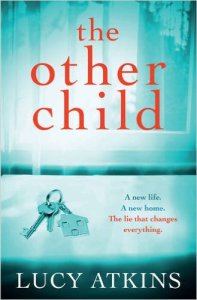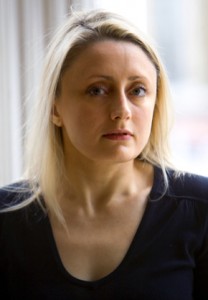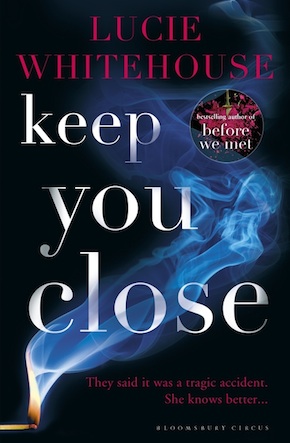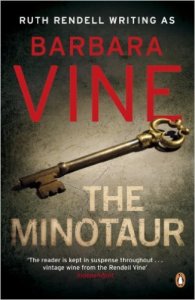Too close for comfort
by Lucie WhitehouseIn cities, crime rates rise with the temperature but I’ve often wondered how many murders happen because of summer holidays. After all, British murder rates spike at Christmas – all those long, workless, alcohol-soaked days closeted away from the real world with the people who know us best: our family.
What surer crucible for psychological harm than the family? Writing Keep You Close, I thought about many ways in which a family can be an instrument of pain. Death, infidelity, cruelty, a lack of love or even an inadequate expression of a love that is there – any can cause unfathomable distress. And who knows better than our parents and siblings our failings and humiliations, our shaming secrets?
Here are ten excellent psychological novels with families at their heart.
Faithful Place by Tana French
Frank Mackay and Rosie Daly grew up in Faithful Place, a Dublin street where jobs were scarce and money more so, the living hard and often violent. At nineteen, they planned to run away and make a new life together in England but though Frank waited for hours at the meeting place on the appointed night, Rosie never came. Twenty years later, her suitcase is found, still packed, and Frank, still wounded, now working as an undercover Dublin cop, is pulled back into the stifling past and the family he’s tried his whole adult life to escape.
You Will Know Me by Megan Abbott
Abbott, a big star among US crime fans, was inspired to write You Will Know Me as she watched the parents of the US gymnastics team for the London 2012 Olympics. This thriller focuses on the Knox family, whose daughter, Devon, 15, is a future Olympic hopeful. Katie and Eric Knox make sacrifice after sacrifice to support Devon’s dream – money, holidays, even the childhood of their younger son, Jack, who grows up on the spectators’ bench at the gym. The pressure is extreme, the weight on the whole family crushing. But even a family so intent on one shared goal is made up of individuals. When you finish the book, the title will take on new, discomfiting meaning.
What I Loved by Siri Hustvedt
A literary novel that suddenly turns into a thriller, What I Loved tells the stories of two families whose lives become intertwined. In 1975, New York art historian Leo Hertzberg buys a painting by Bill Wechsler and thus ignites a friendship between the two men and their families that lasts a lifetime. The thriller half of the novel focuses on the two men’s sons, born the same year but different in every other way. I read this novel more than a decade ago but certain of its images still haunt me.
 The Other Child by Lucy Atkins
The Other Child by Lucy Atkins
Tess, a British photographer and single mother, meets American paediatric heart surgeon Greg when she takes his picture in London. What begins as an exciting romance becomes more difficult, however, when Greg takes a job back in America. Heavily pregnant, transplanted overseas to live among strangers in a suburb of Boston, Tess is vulnerable from page one – Greg is barely at home, the neighbours are beyond strange, and Tess becomes more and more certain someone is watching her. She also has good reason to doubt Greg even wants the new baby. I can’t remember feeling as protective towards a character as I did towards nine-year-old Joe, Tess’ son from her previous relationship.
Dark Places by Gillian Flynn
Libby Day, then seven, was the only member of her family to survive the night her brother Ben went on a murderous rampage on their failing Midwest farm, and it was her testimony that put him in jail. Now an adult, reaching the end of the ‘Baby Day Fund’ and desperate for money, she accepts $500 from a group of true-crime nuts who believe Ben is innocent and want to talk to her. Incredibly dark, and harrowing as much for the depiction of rural poverty and what it means to be an outsider in a small, narrow-minded community, for me this is Flynn’s best so far.
Alys, Always by Harriet Lane
Frances Thorpe is driving back to London after a weekend with her parents when she comes across an accident: Alys Kyte has driven her car off the road and dies at the scene. When the Kyte family later gets in touch, Frances, thirty-something, single and a lowly sub-editor on the books pages of a newspaper, spots an opportunity: Alys’s widower is a Booker-winning novelist, and the Kytes lead a life of intellectual and financial privilege very different from her own humdrum one. The writing is subtly unnerving, Frances simultaneously endearing and horrifying. Lane is also very witty – having started as a lowly sub-editor myself, I found her portrait of life on the newspaper desk horribly, brilliantly recognisable.
We Have Always Lived in the Castle by Shirley Jackson
A gorgeous piece of American Gothic. How’s this for an opening paragraph:
My name is Mary Katherine Blackwood. I am eighteen years old, and I live with my sister Constance. I have often thought that with any luck at all I could have been born a werewolf, because the two middle fingers on both my hands are the same length, but I have had to be content with what I had. I dislike washing myself, and dogs, and noise. I like my sister Constance, and Richard Plantagenet, and Amanita phalloides, the death-cap mushroom. Everyone else in my family is dead.
Vine, the pseudonym under which Ruth Rendell wrote her psychological crime novels, has long been one of my favourites. She is so skilled at creating an atmosphere of dread, layering up her finely drawn and unusual combustible elements. She’s also wonderful at capturing place, something I love. In The Minotaur, newly qualified nurse Kerstin Kvist comes to Lydstep Old Hall in a remote part of Essex to look after John Cosway, the sole son of the widowed Mrs Cosway. A madness that runs in the family is the vague explanation offered for John’s erratic behaviour by one of his four odd sisters but Kerstin soon has reason to question whether he should really be under such powerful medication.
We Need to Talk About Kevin by Lionel Shriver
What a devastating book – I’m envious of anyone who has yet to read it. In a series of letters to her estranged husband, Eva Katchadourian tells the story of their son, Kevin, who perpetrated a high-school massacre just before his sixteenth birthday. The New Statesman reviewed it as “Desperate Housewives as written by Euripides”, which captures both its thriller-like unputdownability and its brilliant forensic examination of motherhood, culpability and the possibility of pure, unfathomable evil.
Don’t Look Now by Daphne du Maurier
This novella is unsettling from page one. “Don’t look now,” John tells his wife Laura at lunch in a Venice café, “but there are a couple of old girls two tables away who are trying to hypnotise me.” Their speculation as to whom the ‘old girls’ might be – male twins in drag, jewel thieves or murderers – sets the tone perfectly, creating a pervasive sense of ambiguity and disorientation. John and Laura are in Venice in an effort to assuage their grief at the loss of their daughter Christine, but the ‘old girls’ claim to be in touch with Christine’s spirit. Laura believes them but John doesn’t – until he sees what seems to be the small figure of his daughter running away from him through the winding Venetian streets.
 Lucie Whitehouse was born in Gloucestershire in 1975, read Classics at Oxford and now lives in Brooklyn. She is the author of The House at Midnight, the TV Book Club pick The Bed I Made and Before We Met, which was a Richard & Judy Summer Book Club pick and an ITV3 Crime Thriller selection. Keep You Close is published by Bloomsbury Circus.
Lucie Whitehouse was born in Gloucestershire in 1975, read Classics at Oxford and now lives in Brooklyn. She is the author of The House at Midnight, the TV Book Club pick The Bed I Made and Before We Met, which was a Richard & Judy Summer Book Club pick and an ITV3 Crime Thriller selection. Keep You Close is published by Bloomsbury Circus.
Read more.
@LWhitehouse5



